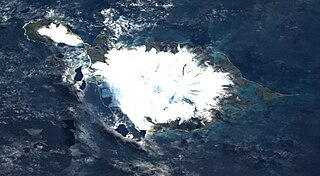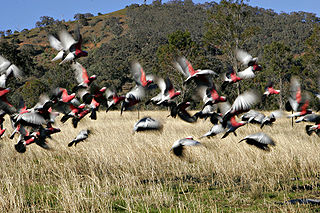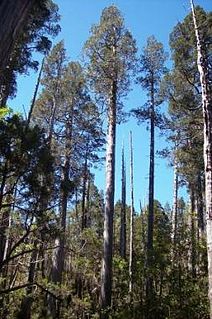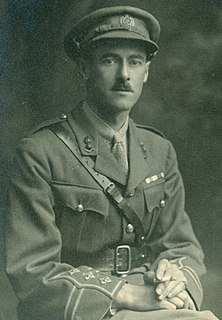Related Research Articles

The Territory of Heard Island and McDonald Islands (HIMI) is an Australian external territory comprising a volcanic group of mostly barren Antarctic islands, about two-thirds of the way from Madagascar to Antarctica. The group's overall size is 372 km2 (144 sq mi) in area and it has 101.9 km (63 mi) of coastline. Discovered in the mid-19th century, the islands lie on the Kerguelen Plateau in the Indian Ocean and have been an Australian territory since 1947. They contain the Australia's only two active volcanoes. The summit of one, Mawson Peak, is higher than any mountain in all other Australian states or territories, except Dome Argus, Mount McClintock and Mount Menzies in the Australian Antarctic Territory.

Australia and its offshore islands and territories have 898 recorded bird species as of 2014. Of the recorded birds, 165 are considered vagrant or accidental visitors, of the remainder over 45% are classified as Australian endemics: found nowhere else on earth. It has been suggested that up to 10% of Australian bird species may go extinct by the year 2100 as a result of climate change.

The macaroni penguin is a species of penguin found from the Subantarctic to the Antarctic Peninsula. One of six species of crested penguin, it is very closely related to the royal penguin, and some authorities consider the two to be a single species. It bears a distinctive yellow crest, and the face and upperparts are black and sharply delineated from the white underparts. Adults weigh on average 5.5 kg (12 lb) and are 70 cm (28 in) in length. The male and female are similar in appearance; the male is slightly larger and stronger with a relatively larger bill. Like all penguins, it is flightless, with a streamlined body and wings stiffened and flattened into flippers for a marine lifestyle.
Gregory Macalister Mathews CBE FRSE FZS FLS was an Australian-born amateur ornithologist who spent most of his later life in England.
Selwyn George "Bill" Lane E.D. R.L. (1922–2000) was an Australian amateur ornithologist who worked for the Sydney County Council for most of life until he retired in 1983.

The Royal Australasian Ornithologists Union (RAOU), now part of BirdLife Australia, was Australia's largest non-government, non-profit, bird conservation organisation. It was founded in 1901 to promote the study and conservation of the native bird species of Australia and adjacent regions, making it Australia's oldest national birding association. In 1996, the organisation adopted the trading name of Birds Australia for most public purposes, while retaining its original name for legal purposes and as the publisher of its journal, the Emu. In 2012, the RAOU merged with Bird Observation & Conservation Australia to form BirdLife Australia.
Johnstone is a surname. It is a variant of the similar surname Johnston which in most cases is a habitational surname derived from several places in Scotland.

The King Island emu is an extinct subspecies of emu that was endemic to King Island, in the Bass Strait between mainland Australia and Tasmania. Its closest relative may be the extinct Tasmanian emu, as they belonged to a single population until less than 14,000 years ago when Tasmania and King Island were still connected. The small size of the King Island emu may be an example of insular dwarfism. The King Island emu was the smallest of all known emus and had darker plumage than the mainland emu. It was black and brown and had naked blue skin on the neck, and its chicks were striped like those on the mainland. The subspecies was distinct from the likewise small and extinct Kangaroo Island emu in a number of osteological details, including size. The behaviour of the King Island emu probably did not differ much from that of the mainland emu. The birds gathered in flocks to forage and during breeding time. They fed on berries, grass and seaweed. They ran swiftly and could defend themselves by kicking. The nest was shallow and consisted of dead leaves and moss. Seven to nine eggs were laid, which were incubated by both parents.
Alexander Hugh Chisholm OBE FRZS also known as Alec Chisholm, was a noted Australian naturalist, journalist, newspaper editor, author and ornithologist. He was a member of the Royal Australasian Ornithologists Union (RAOU), President of the RAOU 1939–1940, and editor of its journal the Emu from 1926 to 1928. In 1941 he was elected a Fellow of the RAOU in 1941 and the previous year he had been the first recipient of the Australian Natural History Medallion for his work in ornithology and popularising natural history. Chisholm was a prolific and popular writer of articles and books, mainly on birds and nature but also on history, literature and biography.

Sir Robert Alexander Falla was a New Zealand museum administrator and ornithologist.
John Warham was an Australian and New Zealand photographer and ornithologist notable for his research on seabirds, especially petrels.
Mitchell Durno Murray was an Australian veterinary scientist, and an ornithologist with a particular interest in seabirds. He was born and educated in England before moving to New Zealand and then Australia. He was the first regional organiser for New South Wales of the Australian Bird Banding Scheme. He was instrumental in establishing the New South Wales Albatross Study Group, now the Southern Oceans Seabird Study Association (SOSSA). He was President of the Australian Bird Study Association 1973–1974, Editor of its journal Corella 1990–1994, and largely responsible for its 'Seabird Islands' series.
Norman Joseph Favaloro was an Australian lawyer and amateur ornithologist and zoologist. Norman was born in Bendigo. He practiced law in Mildura, Victoria where he lived most of his life. In 1940 he was appointed an Honorary Associate in the Ornithology Department of the National Museum of Victoria, an association he retained the rest of his life. He made three trips to the subantarctic, visiting Macquarie Island, Heard Island and Kerguelen Island. At Macquarie Island he collected king penguins and their eggs for the National Museum of Victoria. His own notable egg collection was also bequeathed to the Museum.
William Bert Emison (1939–1999) was born in Boise, Idaho, studied zoology at the University of Montana, worked in the Antarctic studying the diet of the Adelie penguin, and received an MSc degree through Johns Hopkins University in 1967. Subsequently, he worked in the Aleutian Islands and studied the whistling swan before moving to Australia in 1972.

The sub-Antarctic zone is a region in the Southern Hemisphere, located immediately north of the Antarctic region. This translates roughly to a latitude of between 46° and 60° south of the Equator. The subantarctic region includes many islands in the southern parts of the Atlantic, Indian, and Pacific oceans, especially those situated north of the Antarctic Convergence. Sub-Antarctic glaciers are, by definition, located on islands within the sub-Antarctic region. All glaciers located on the continent of Antarctica are by definition considered to be Antarctic glaciers.

The Antarctic Floristic Kingdom, also the Holantarctic Kingdom, is a floristic kingdom that includes most areas of the world south of 40°S latitude. It was first identified by botanist Ronald Good, and later by Armen Takhtajan. The Antarctic Floristic Kingdom is a classification in phytogeography, different from the Antarctic realm classification in biogeography, and from Antarctic flora genera/species classifications in botany.
The Heard Island shag, or Heard Island cormorant, is a marine cormorant native to the Australian territory comprising the Heard and McDonald Islands in the Southern Ocean, about 4100 km south-west of Perth, Western Australia.

The wildlife of Antarctica are extremophiles, having to adapt to the dryness, low temperatures, and high exposure common in Antarctica. The extreme weather of the interior contrasts to the relatively mild conditions on the Antarctic Peninsula and the subantarctic islands, which have warmer temperatures and more liquid water. Much of the ocean around the mainland is covered by sea ice. The oceans themselves are a more stable environment for life, both in the water column and on the seabed.

Patricia Margaret Selkirk, is an Australian plant biologist and ecologist. Her career has focused on Antarctic and subantarctic terrestrial ecosystems and she is recognized as being a pioneering female Australian Antarctic scientist.

Major Geoffrey Armstrong Buddle was a New Zealand naturalist, ornithologist, and civil engineer, and a founding member of the Ornithological Society of New Zealand. He was the grandson of the early Methodist missionary Thomas Buddle.
References
- Rounsevell, D. (1988). Obituary. Gavin Wildridge Johnstone 1941–1987. Emu 88: 64.